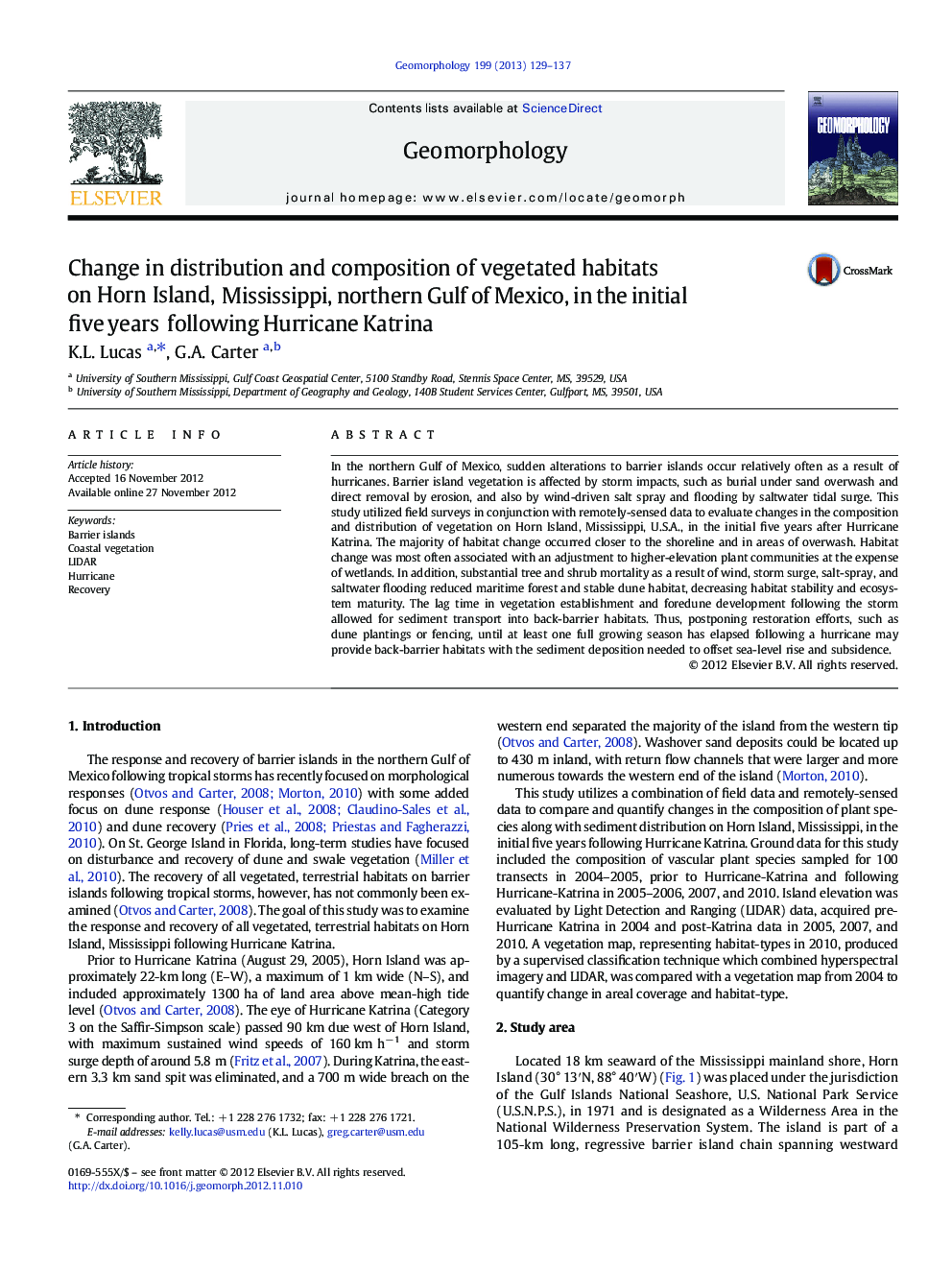| Article ID | Journal | Published Year | Pages | File Type |
|---|---|---|---|---|
| 4684795 | Geomorphology | 2013 | 9 Pages |
In the northern Gulf of Mexico, sudden alterations to barrier islands occur relatively often as a result of hurricanes. Barrier island vegetation is affected by storm impacts, such as burial under sand overwash and direct removal by erosion, and also by wind-driven salt spray and flooding by saltwater tidal surge. This study utilized field surveys in conjunction with remotely-sensed data to evaluate changes in the composition and distribution of vegetation on Horn Island, Mississippi, U.S.A., in the initial five years after Hurricane Katrina. The majority of habitat change occurred closer to the shoreline and in areas of overwash. Habitat change was most often associated with an adjustment to higher-elevation plant communities at the expense of wetlands. In addition, substantial tree and shrub mortality as a result of wind, storm surge, salt-spray, and saltwater flooding reduced maritime forest and stable dune habitat, decreasing habitat stability and ecosystem maturity. The lag time in vegetation establishment and foredune development following the storm allowed for sediment transport into back-barrier habitats. Thus, postponing restoration efforts, such as dune plantings or fencing, until at least one full growing season has elapsed following a hurricane may provide back-barrier habitats with the sediment deposition needed to offset sea-level rise and subsidence.
